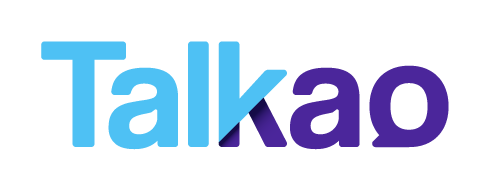It’s very common to confuse the terms language, tongue, and dialect. At first glance, it might not seem that important, and you may think it doesn’t affect your learning process. However, things are not always as simple as they seem. While these concepts are closely related, they do not mean exactly the same thing.
Understanding the differences between language, tongue, and dialect won’t just enrich your linguistic knowledge—it will also give you a clearer, more critical perspective, especially if you’re just starting to learn a new language.
But you might be wondering:
- How does it affect me to know whether I’m learning a language, a tongue, or a dialect?
- Does it get easier depending on what I choose to learn?
- Are there any rankings or hierarchies between these terms?
These are all logical and natural questions. That’s why, with the help of a multilingual conversational AI, you’ll be able to recognize the differences more easily. You’ll also benefit from a semantic and multicultural analysis that highlights distinctions between these terms.
Let’s dive into this fascinating topic and explore the wonderful world of multicultural linguistics. We’ll start by defining each term individually.
What is a language?
When you think of languages, examples like Spanish, English, French, or Chinese probably come to mind. In general terms, a language is a system of verbal—and often written—communication. As part of human evolution, a language serves as a unique vehicle of expression for a particular community. One of its key distinguishing features is that it follows a specific set of rules. These are grammatical and lexical norms shared by its speakers.
The word language tends to go beyond the simple act of human communication. It is often tied to political or administrative recognition. In other words, a language is frequently defined as such when it has official status within a country or region. For example, Catalan is considered a language because it is officially recognized in some parts of Spain. Similarly, Cantonese has co-official status in various regions of China.
So, one of the main features of a language is its official recognition. Yes, we know—it sounds like a philosophical concept. Something like, “You are because you exist and I acknowledge you.” But let’s go a bit deeper to fully understand what makes a language… a language.
The status of language: A political decision?
For many linguists, a language is a codified form of speech that has been institutionalized. It is regulated and officially recognized by a political or educational authority. While it may seem that the difference between language, tongue, and dialect is simply a matter of “status,” the reality is more nuanced.
At its core, a language is a structured system of oral and/or written signs. A system that enables communication among members of a human community. Now, you might think: “Isn’t that obvious?” But you’d be surprised—many animals have structured communication systems. So, not every communication system qualifies as a language. What makes it a true language is that it is exclusively human.
This system is governed by phonetic, grammatical, syntactic, and semantic rules, which must be shared by its users for communication to be effective. Additionally, there must be some regulatory authority in charge of maintaining and updating these rules. Sometimes this authority is a formal institution, like the Royal Spanish Academy (RAE); in other cases, it may be a more loosely organized entity. Either way, a regulatory body is essential for any recognized language.
The anthropological perspective: Language as a cultural expression
Reducing language to just a technical tool is far too simplistic. This is precisely why distinguishing between language, tongue, and dialect is so important. It’s also crucial for understanding the semantic and cultural dynamics that shape how different communities across the world communicate.
Put another way: language is not just a means of transmitting information—it’s also a powerful tool for constructing reality. It allows us to express emotions, define our identity, and pass down ways of thinking. In essence, language is a manifestation of the human condition. It is, fundamentally, an anthropological fact.
From an anthropological viewpoint, language is a living cultural phenomenon. Each language reflects the worldview of the community that speaks it. The structure of a language can reveal how its speakers relate to concepts like time, space, nature, and social relationships.
Language as a reflection of society
Take, for example, some Indigenous languages in the Americas. These languages often have specific verb forms to indicate whether an event was witnessed directly or learned secondhand. This linguistic distinction reflects a worldview rooted in experience and truthfulness.
Other languages do not have verb tenses to refer to the future. This can be interpreted as a cultural emphasis on the present moment and a realistic approach to life. There are countless examples of how languages act as mirrors of a society’s values and perspectives.
Learning a new language, therefore, is not just about memorizing vocabulary. It’s about entering a cultural universe. It’s about discovering how others think and feel—and about developing a deep intercultural sensitivity, a skill that is increasingly valuable in today’s globalized world.
Language and collective memory
In many communities, language is deeply connected to collective memory. It serves as a vehicle for passing down oral traditions and ritual practices across generations. When a language is lost, it’s not just the words that disappear—it’s an entire way of understanding the world.
But wait—isn’t that the same as a tongue? As you’ll see, although they may seem interchangeable, there are subtle but important differences between language, tongue, and dialect.

What is a tongue?
The term tongue is often used as a synonym for language. In many contexts, using them interchangeably is perfectly acceptable. In fact, many people group together language, tongue, and dialect as if they all referred to the same thing. However, if we dig a little deeper, we find that a tongue is a complete linguistic system—equipped with its own grammar, vocabulary, and phonetics—allowing its speakers to communicate effectively.
From a linguistic point of view, every tongue is a language, but not every language needs to be officially recognized to be considered a tongue. This is where a key difference emerges: the term tongue emphasizes the communicative structure, while language often highlights political or social recognition.
Let’s take Quechua, for example—an Indigenous tongue spoken by millions across South America. While it may not be the official language in every country where it is spoken, it is still considered a tongue in linguistic terms. Why? Because it has a structured grammar and a rich oral tradition that spans centuries—even without a formal institution like a “Quechua Academy.” Put simply, you could say that a language is a recognized and regulated tongue. But is that the only thing that sets them apart? Let’s find out.
The ongoing confusion between language and tongue
Although the words language and tongue are often used as synonyms, the main difference lies in institutional and political recognition. In other words, a language can be seen as a “certified tongue”, with academic and political status—but not necessarily a difference in its linguistic structure.
A tongue is a complete linguistic system in itself, regardless of whether it is official or standardized. It’s a broader, more neutral term from a linguistic standpoint. On the other hand, a language is a tongue that has been officially recognized by a state or institution and is often used in formal settings such as education, government, and the media.
This means there are many tongues that are not considered official languages, yet possess immense cultural and linguistic richness. The recognition of a tongue as a language doesn’t depend on its complexity or inherent value—it’s the result of political, historical, and social factors.
Let’s be clear: although it may seem confusing, a language is not a “superior” form of a tongue. That is, it doesn’t make it more important or better—it’s simply an official, political label, nothing more. To better understand this, let’s explore what a tongue truly represents for a community.
The tongue: A bond and vehicle beyond communication
A tongue is far more than just a means of communication. It is, above all, a social construct that serves vital functions within a community. Through it, people share knowledge, values, beliefs, and ways of thinking. A tongue shapes personal and collective identity, connecting individuals to one another.
You can’t fully grasp multicultural semantics without recognizing that a tongue is:
- A way of interacting with the world
- A set of implicit social norms
- A worldview shared by a community
Therefore, the social importance of a tongue is expressed on multiple levels.
First, it promotes social cohesion. A shared tongue allows community members to understand each other, pass down traditions, and engage in collective practices.
Second, it serves as a marker of identity. Speaking a certain tongue can indicate one’s geographic origin, ethnic group, or cultural affiliation. Let’s take a closer look at this connection.
Tongues and origins: How are they connected?
There’s no doubt about it—a tongue is a vehicle of identity. Whether you realize it or not, you use your mother tongue not only to communicate but as a tool that defines who you are and who you identify with. Your accent, the expressions you use, the rhythm of your speech—they all reveal your cultural and social background.
Throughout history, tongues have been symbols of belonging and, in many cases, of resistance. Communities that have been marginalized or colonized often preserve their tongue as a way to maintain cultural autonomy. Learning such tongues can be seen as an act of empathy and respect for human diversity.
At the same time, globalization and migration have created multilingual, intercommunity contexts. In many parts of the world, tongues coexist, interact, or even compete with one another. While this presents cultural and social challenges, it also opens the door to a more inclusive view of language—as a bridge, not a barrier.
In this context, let’s move on to the final link in our multicultural semantic analysis. Let’s examine the role of dialects, and how they differ from languages and tongues.
What is a dialect?
The word dialect is, without a doubt, one of the most misunderstood—and often unfairly used—terms in linguistics. A dialect is a regional or social variety of a language. It shares the same structural foundation as the main linguistic system to which it belongs, yet it exhibits phonological, lexical, or grammatical differences.
For example, in Spain, Andalusian, Canarian, and Northern Castilian are dialects of Spanish. In English, you might consider Cajun English or Welsh English as dialects. All of these are fully mutually intelligible, yet they have distinct features in pronunciation, vocabulary, and sometimes even in writing.
It’s crucial to understand that the term dialect does not imply linguistic inferiority. Unfortunately, due to widespread misconceptions and social prejudice, the word is often wrongly associated with “less developed” forms of speech. But in reality, all dialects are complex, rich systems, fully capable of expressing anything—from everyday conversations to abstract philosophical ideas.
The sociolinguistics of dialects
A well-known quote says that a dialect is a language without an army or navy. In other words, dialects are linguistic expressions that lack political or institutional recognition. From this broader perspective, one might argue that language, tongue, and dialect are fundamentally the same—what sets them apart is their scope, influence, and power.
The truth is, the distinction between language, tongue, and dialect is not linguistic—it’s social. Certain ways of speaking are perceived as more “prestigious” because of their association with political or economic power, while others are viewed as less formal or even “improper.” This is a subjective distinction that does not reflect the true linguistic value of any dialect.
Although dialects are fully functional and coherent systems, they may show greater variability in usage. This often happens because dialects lack formal institutions to regulate or standardize them. For instance, Catalan is officially recognized in several autonomous regions of Spain. In contrast, Aragonese and Asturleonese are considered dialects—minority languages with less institutional support or political recognition.
This brings us to a question that frequently arises—especially when using multilingual AI tools:
Is a dialect an “incorrect” way of speaking?
Absolutely not. This is one of the most harmful and persistent myths in language learning and sociolinguistics. Thinking of a dialect as a “bad version” or “wrong way” of speaking a language is a mistake rooted in social bias, not linguistic reality.
As a language learner, it’s important to know that dialects fulfill complete and effective communicative functions. Communities that speak in dialects use them to express emotions, tell stories, coordinate social activities, and even create literature and art.
The truth is, we all speak a dialect—even those who use an officially recognized language. The Spanish spoken in Seville is not the same as in Bogotá or Madrid. All of them are dialectal variations of Spanish. This linguistic diversity is not a flaw, but rather an invaluable cultural treasure.
Therefore, rejecting the interconnectedness of language, tongue, and dialect is a fundamental mistake—one you cannot afford to make on your path as a language learner.

Why should you know the difference between language, tongue, and dialect?
Did you know that many dialects eventually become languages, and many languages gain the status of official languages, or idioms? This has happened countless times. Take Guaraní, a language from South America. For many years, it was considered just an unimportant indigenous dialect. But when Paraguay and several regions in Argentina, Uruguay, and Brazil made it official, it became a recognized language. So, treating a dialect as something inferior is clearly a baseless form of exclusion.
Exploring the world’s languages, tongues, and dialects allows you to discover the inner richness of each culture. You gain insight into their history, cultural nuances, and ability to adapt to different realities. It also brings you closer to the traditions, customs, and everyday expressions of each community. Moreover, by studying dialectal variations, you can even enhance your understanding of standardized languages.
At the same time, you develop cultural empathy, learn to appreciate other ways of speaking, and promote respect for linguistic diversity. This actively helps fight against linguistic prejudice, which often leads to other forms of social discrimination.
“To save a language”: The sad reality behind dialects
Unfortunately, many dialects around the world are at serious risk of extinction. Learning and studying them is one of the best ways to preserve their legacy. You might find this both surprising and saddening: the last speaker of Manda, a Native American dialect, passed away in 2016.
That event inspired a powerful documentary titled “To Save a Language,” which sheds light on the endangerment of Indigenous languages around the world. The core issue? Linguistic prejudice—the belief that some ways of speaking are less valuable—has pushed these dialects to the brink of extinction.
But this is not just a problem in North America. In every region of the world, there’s growing concern about the disappearance of thousands of dialects. That’s why, when you learn a dialect, you’re not just acquiring new vocabulary—you’re becoming a voice for its survival and an advocate for its preservation.
With Talkao, discover much more than just new languages
Talkao’s multilingual conversational AI features don’t stop at official languages. You can explore dozens of regional dialects and unofficial tongues from all over the world. In fact, Talkao allows you to translate over 125 languages, tongues, and dialects—right from your phone!
Thanks to real-time voice translation powered by AI, you can carry on conversations in a natural and fluent way. Whether you’re traveling, studying, or practicing a new dialect, Talkao ensures accurate and context-aware translation.
And with Talkao’s powerful Camera Translator, you can translate texts found in images, handwritten notes, or even non-Latin alphabets—in seconds, without typing a single character.
Learn languages, discover cultures, connect with the world
Learning a language, tongue, or dialect brings you one step closer to the world. It opens up your boundaries and helps you see the beauty in cultures that are often overlooked or waiting to be discovered.
With Talkao, you’re not just learning how to translate—you’re building bridges across cultures.

















